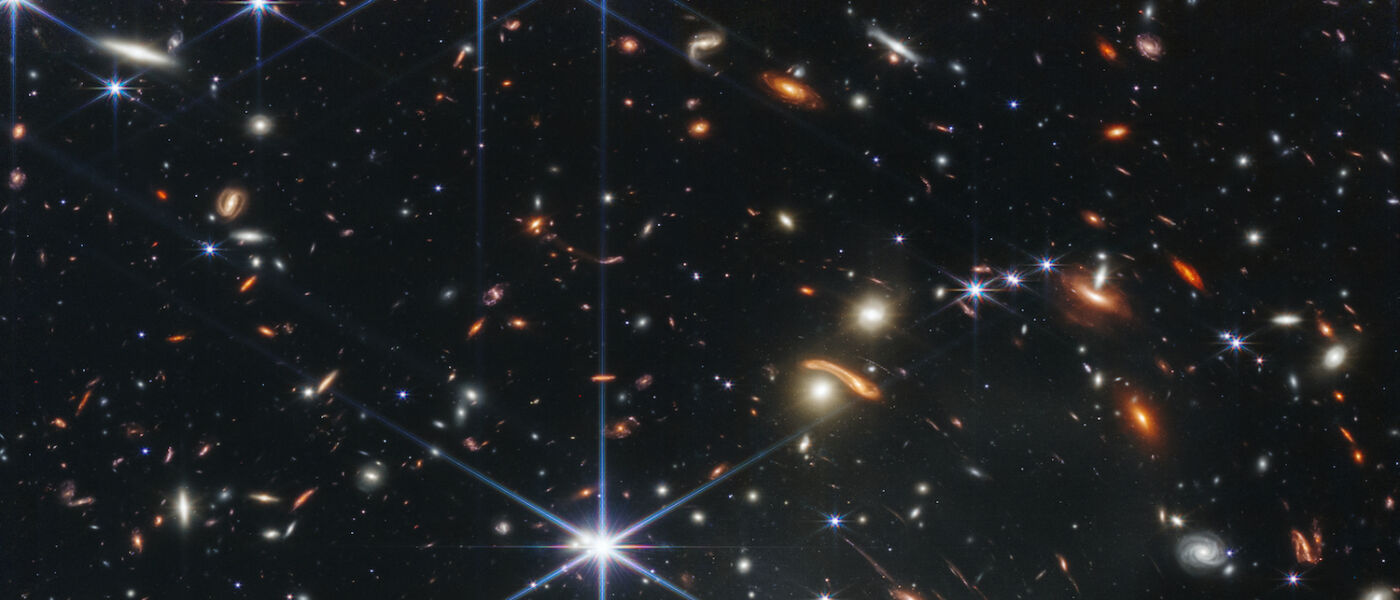First James Webb Space Telescope image of the deep universe is revealed

Today, NASA revealed the first breathtaking image taken by the James Webb Space Telescope. Four other images, featuring never before seen views of our universe, will be revealed starting tomorrow at 10:30am on NASA’s live stream. The incredible image is our deepest view into the universe ever.
This image, showing us the vastness of the universe, is taken from a patch of sky the size of a grain of sand held at arm’s length. In it, every individual object, tens of thousands of them, is its own galaxy—each one a unique collection of billions of stars and planets. The group of galaxies in the foreground has such incredible mass and gravity that it acts as a giant lens, magnifying the galaxies behind it and allowing us to see even farther away in greater detail. We are seeing these galaxies as they looked in the past, some of them over 13 billion years ago. The light released that long ago, has traveled all this time from near the beginning of the universe, to be seen by us today.
The James Webb Space Telescope launched in December of 2021 and spent 30 days traveling to its final destination: a stable orbit approximately 1 million miles from Earth. In the meantime, the telescope has still been hard at work!
The instruments on the telescope see infrared light, the same kind of light that is emitted as heat from everything in the universe. To help them work, the telescope has to be at a frigid -447 degrees Fahrenheit! Perhaps, though, the most impressive feature of the telescope is its immense mirror, 21 feet 4 inches across, larger than any space telescope in human history. In order to be so large, the mirror has to be made of 18 individual hexagonal pieces. These pieces have been painstakingly aligned by the scientists and engineers at NASA to give us the crisp, clear view of the universe that we see above.
In the coming years the James Webb Space Telescope will give us unprecedented views of the cosmos. We can now look back in time to study the earliest formations in our universe, the atmospheres of planets outside our solar system, and much, much more.
The biggest planetarium in America is the best place to check out the never-before-seen images of deepest space. Check out one of our twice-daily "What's Next in Space" shows in the Jennifer Chalsty Planetarium to see all of the JWST images and learn more.
